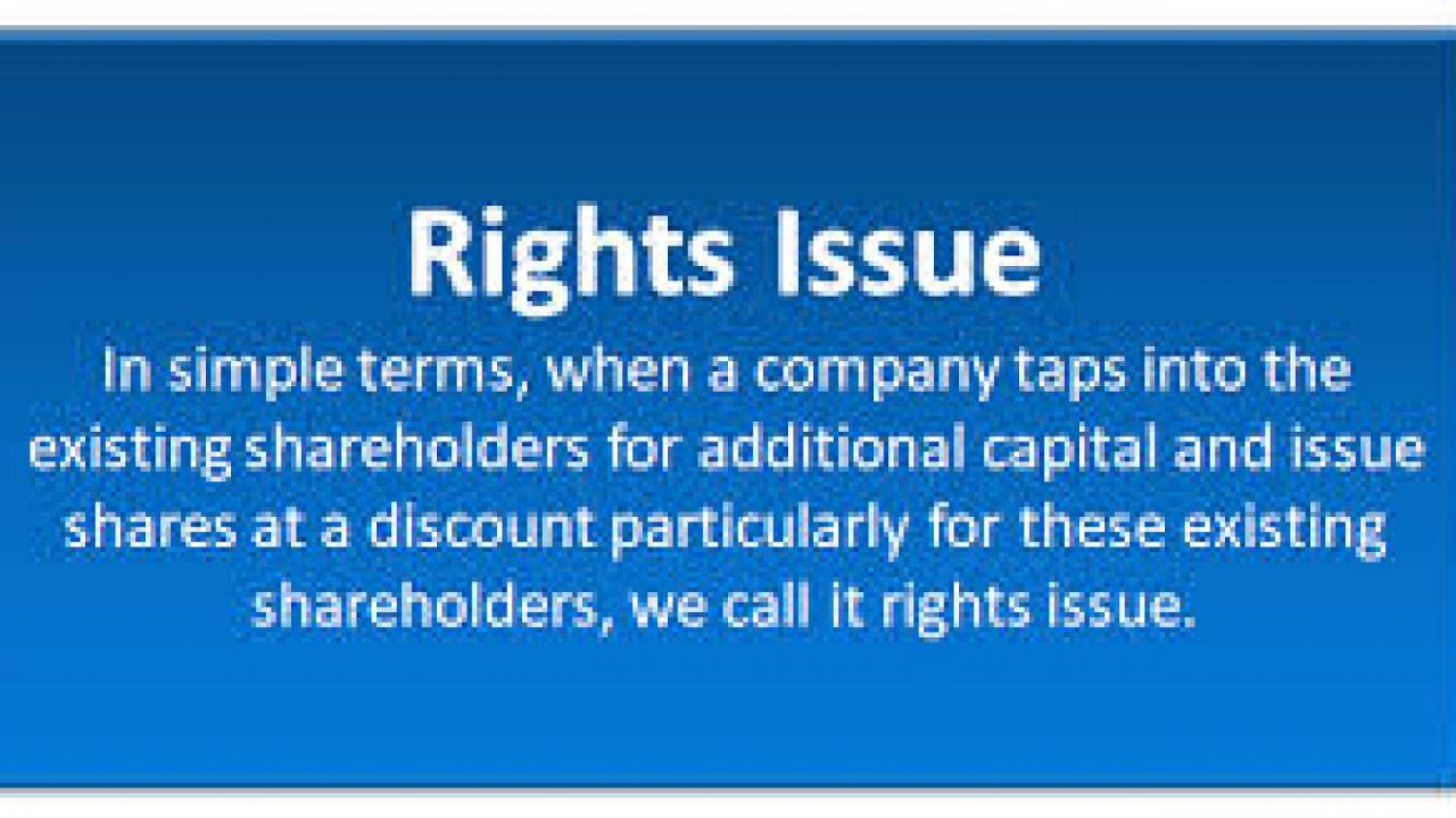
Introduction
When discussing the stock market, the most common terminology is ‘equity shares’. Equity refers to the shares or stock that represent the measure of a company’s capital to which each shareholder is entitled. Based on their definition, companies make more than one type of equity offering. These include bonus shares, rights shares, sweat equity shares, and more. This article discusses the rights issue meaning and what rights share.
What is the right issue of shares?
When a company needs to raise additional capital and keep the voting rights of the existing shareholders proportionately balanced, the company issues rights shares.
A rights share issue is an offering of rights given to a company’s existing shareholders, allowing them to purchase additional shares directly from the company at a discounted price, rather than buying them through the secondary market. The number of additional shares that a shareholder can purchase depends on their existing holding.
Features of Right Issue of Shares
● Corporations issue rights when they need cash for various purposes. This process allows the company to raise funds without incurring underwriting fees.
● A rights issue gives existing shareholders preferential treatment by giving them the right, rather than the obligation, to purchase shares at a lower price on or before a certain date.
● Existing shareholders also have the right to trade with other interested market participants until new shares are available for purchase. Rights shares are traded in the same manner as ordinary equity shares.
● The number of additional shares available to shareholders is generally proportional to their existing shareholdings.
● Existing shareholders may choose to forego the rights shares. However, if they do not purchase additional shares, their existing holdings will get diluted once the additional shares are issued.
Reasons for a Right Issue of Shares
When a company plans to expand its business, it may require additional capital for various reasons such as a need to pay off debt, purchase equipment, or acquire another company. Rather than opting for debt, they may prefer equity to avoid interest payments. When raising equity, rights issues are a quick and easy way for capital expansion. Similarly, projects in which debt financing is unavailable, inappropriate, or expensive will typically result in companies raising capital through the issuance of rights.
Companies looking to improve the debt-to-equity ratio can similarly raise capital. Additionally, distressed companies may issue rights shares to pay off debt and improve their financial health.
Example of a Rights Issue?
John owns 1000 shares of XYZ Ltd. trading at Rs. 10 each. The company then announces a rights issue in the 2-for-5 ratio. The company announces the issue at a discounted price of Rs. 6 per share. Therefore essentially, for every 5 shares at Rs. 10 each, held by an existing shareholder, the company will offer 2 rights shares at a discounted price of Rs. 6.
John’s Portfolio Value (before rights issue) = 1000 shares x Rs. 10 = Rs. 10,000
Number of right shares to be received = (1000 x 2/5) = 400
Price paid to buy rights shares = 400 shares x Rs. 6 = Rs. 2400
Total number of shares after exercising rights issue = 1000 + 400 = 1400
Revised Value of the portfolio after exercising rights issue = Rs. 10,000 + Rs. 2400 = Rs. 12,400
Should be price per share post-rights issue = Rs. 12,400 / 1400 = Rs. 8.86
In theory, the share price after the rights issue should be Rs. 8.86; however the market value may differ. An uptrend in the share price will benefit the investor, while if the price falls below Rs. 8.86, he will lose money.
Conclusion
A right issue of shares benefits existing shareholders, offering them the advantage of applying for shares at a discounted price and retaining their voting rights. A company can raise a reasonable amount of capital through the rights issue of shares.
Financial and Business expert having 30+ Years of vast experience in running successful businesses and managing finance.





